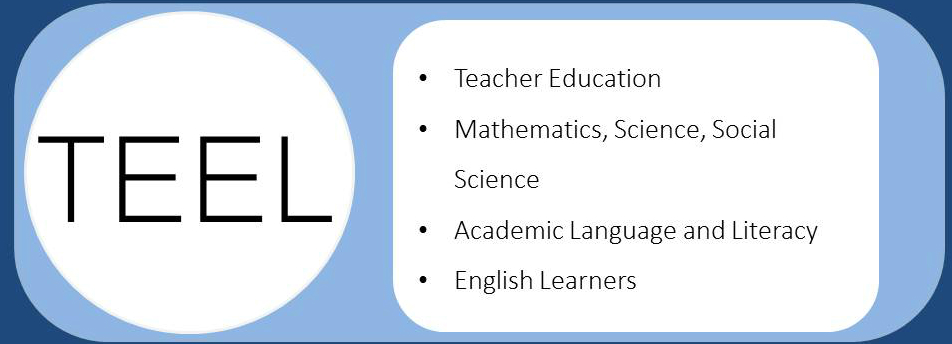Integrated Instructional Units
The integrated instructional units are designed to train teachers to develop science units that build on both the state Science Teaching Standards and the state English Language Development standards to scaffolds both student science understanding and language and literacy development. The teachers, both experienced and pre-service teachers, have a personal learning experience through the integrated unit. Sciences methods instructors and professional developers teach the unit to the student explicitly modeling the strategies. The instructor and teachers engage in analysis and discussion of the units and the learning experiences during the process. After the learning experience, teachers use the model to develop their own integrated lesson plans. An elaborated version of this unit and six additional integrated elementary science instructional units can be found at http://education.ucsc.edu/estell/pdf/estell_sci_methods_course_materials.pdf.
ESTELL Integrated Lesson Plan: Moon Phases and Seasons (3rd grade)
This series of activities provide students opportunities to experience and understand the nature of science and levels of inquiry through the context of Sun-Earth-Moon (SEM) systems. Students are introduced to day and night througha whole class reading of a non-fiction reader. A kinesthetic modeling of day and night allows students to experience the spinning Earth and the day/night cycle. Selected manipulatives, models, visuals, video clips and teacher demonstrations will be provided to support students’ conceptual understanding. The guided inquiries are designed using the 5E Learning Cycle Model to provide a student-centered and planned sequence of instruction (Engagement, Exploration, Explanation, Extension/Elaboration, and Evaluation).
Day 1 – Access students’ prior knowledge about the Sun-Earth-Moon systems
Activity 1: Concept Mapping: Why do you think we have day and night? What do you want to know more about day and night?
Activity 2: KWL: Phases of the Moon
Activity 3: S-E-M Model
Activity 3A: Moon Phase Demo (whole class) – Optional
Day 2 – Causes of Seasons (Guided Inquiry) Activity 4: Sun-Earth Survey (Pre-Assessment) Activity 5: What Causes the Earth’s Seasons? OR Activity 5A: How Angle Spreads a Flashlight Beam
Big Ideas/Unifying Themes: Models & Scale and Systems & Interactions
The objects in our solar system move in regular and predictable patterns that can be observed, recorded, and analyzed. The position of the Earth during its rotation causes the cycle of day and
night. The observed phase of the moon is determined by its position relative to the Earth and
Sun. Earth’s seasons are caused by the tilt of its axis.
Process Skills: Observing, Making Inferences, Hypothesizing, Communicating, Constructing Models, Theory Development
Intended Learning Outcomes:
At the end of these lessons, students will be able to:
- (Day 1) Describe & demonstrate the Earth’s rotation on its axis in a cyclical fashion.
- Demonstrate & illustrate why there are phases of the moon, using given manipulative & models.
- Read and retell at least one story about how people from different cultures have various beliefs about the Sun, Earth and Moon.
- (Day 2) Assess personal models about what causes the Earth’s seasons after viewing The Private Universe video clip, reading informational texts, and in-class demonstrations.
- Formulate effective scientific questions and use evidence from data (i.e, observations and measurements) to refine their explanations.
Instructional Vignettes
The cases contained in the instructional vignettes give rich examples of integrated instruction with explanatory text. The ESTELL instructional scenarios can be viewed at http://education.ucsc.edu/estell/pdf/ESTELL_Teacher_Handbook_2010.pdf
